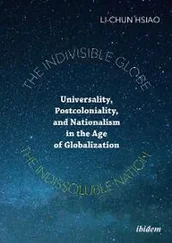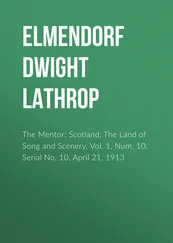According to Shakespeare (and the Tales of a Grandfather ), Macbeth was a trusted general of the venerable and much-loved King Duncan I of Scotland. With his fellow-general Banquo, Macbeth quells an insurrection and defeats a major viking invasion in Fife. On his way home, on a ‘blasted heath’ near Forres, he encounters three witches. The first addresses him as Thane of Glamis (a title which he has just inherited). The second addresses him as Thane of Cawdor (which Duncan has just named him, although Macbeth does not know it yet). The third, ominously, addresses him as ‘Macbeth! that shalt be king hereafter!’ For Banquo, they promise less in the immediate future but much more to come: ‘Thou shalt get kings, though thou be none.’
Soon afterwards, messengers arrive to announce that Macbeth is to receive the title and possessions of the Thane of Cawdor, who had been a traitor in the rebellion and is shortly to be executed. Macbeth is thunderstruck: ‘Two truths are told,/as happy prologues to the swelling act/of the imperial theme’.
According to Shakespeare, Macbeth now writes a letter to his wife telling her of his encounter with the witches, and sends notice that the king himself is coming to stay with them at their castle at Inverness. Lady Macbeth works on her husband’s latent ambition and incites him to kill the king – which he does, albeit unnerved by the deed. 1 Duncan’s two young sons, Malcolm (the Prince of Cumbria) and Donalbain, fearful of suffering the same fate, flee the country.
Macbeth thereupon assumes the crown. Mindful of the witches’ prophecy that Banquo will be the progenitor of future kings of Scotland, Macbeth sends hired assassins to kill Banquo and his young son Fleance; Banquo is struck down, but Fleance escapes, and his progeny later become the ruling Stewart dynasty of Scotland.
Macbeth now embarks on a reign of terror. He consults the witches again, and they warn him to beware of Macduff, the Thane of Fife. But they also tell him that ‘none of woman born’ will ever harm him, and that he ‘shall never vanquished be, until/Great Birnam wood to high Dunsinane hill/Shall come against him.’
Before Macbeth has time to act, Macduff, suspecting that he is next on the king’s hit-list, flees to England to join Duncan’s son Malcolm. In thwarted fury Macbeth sends his assassins to Macduff’s castle in Fife and has Macduff’s wife and young family slaughtered.
At the English court the Scottish refugees, spurred on by Macduff’s arrival, assemble an army with English help and invade Scotland. To hide their advance towards the tyrant’s lair at Dunsinane Castle they camouflage themselves with branches cut from Birnam Wood. Macbeth is shaken by the news that the wood seems to be coming to Dunsinane; he is even more dismayed when he faces the vengeful Macduff, who reveals that he was not ‘of woman born’, but had been ‘from his mother’s womb untimely ripp’d’. There is nothing left for Macbeth now but to die valiantly: ‘Lay on, Macduff; and damn’d be him that first cries, “Hold, enough!”’ Macbeth is duly slain by Macduff, who brings the tyrant’s head to Malcolm – the future Malcolm III, Malcolm Canmore.
Birnam Wood and Dunsinane
A walkway along the River Tay, known as the ‘Terrace Walk’, runs between the neighbouring towns of Dunkeld and Birnam. Just behind the Oak Inn of the Birnam House Hotel a sign highlights the presence of the ‘Birnam Oak’ – a very old, gigantic oak tree, its heavy, brittle branches now propped up on crutches. It is said to be the last remaining tree from the ancient Birnam Wood made famous by the witches’ prophecy in Shakespeare’s Macbeth. It was from this very tree (it is implied), and others like it, that Malcolm’s soldiers cut branches to disguise their advance on Macbeth’s castle at Dunsinane Hill, in the Sidlaws, some twenty-two kilometres as the crow flies to the south-east, off the Perth to Coupar Angus road (A94). 1 Dunsinane is a low hill which is not difficult to ascend. Its flat summit is crowned by the impressive remains of a huge prehistoric hill-fort with triple ramparts which are still clearly visible; unfortunately, it could not have been a castle in Macbeth’s day. However, from the summit one can look north-west along the Tay Valley towards the woods of Birnam and the beautiful Howe of Strathmore, and (with luck and a little imagination) make out the gap in the hills through which a camouflaged army might have advanced towards Dunsinane. Or so they say.
A few miles to the south of Dunkeld, and now bypassed by the A9 to Perth, the little village of Bankfoot provides a ‘Macbeth Experience’ as part of a Visitor Centre which was created in a former motor museum in 1993 by an entrepreneurial local couple, Wilson and Catriona Girvan. A spirited multi-media production offers a view of the ‘millennium of mystery’ surrounding the Macbeth story, or rather two views – the Shakespearean view, and the ‘real’ view. It presents Shakespeare enthusiastically reading his source material – the English chronicler Ralph Holinshed, who compiled The Chronicles of England, Scotland and Ireland in the 1570s – and penning his ‘pretty tale’ of the witch-ridden, bloodthirsty usurper who lost his head to Macduff when Birnam Wood came to Dunsinane; interwoven with this yarn is the story of what is now considered the ‘real’ Macbeth.
In this story, Macbeth was one of the great Scottish kings. His name in Gaelic, MacBeathadh, means ‘Son of Life’. He was the son of Findlaech mac Ruairdri, mormaer (earl) of Moray, who was killed by his nephews in 1020; Macbeth had royal blood in his veins as a member of one of the three kindreds of Dalriada (Argyll) who had extended their power up the Great Glen into Moray. In 1032 Macbeth took vengeance when he burned to death one of his father’s killers, Gillacomgain, along with fifty of his men, and was thereby able to assume his father’s rank of mormaer of Moray. He then strengthened his claim to the throne by marrying the dead man’s widow, Gruoch, who was herself descended from the royal line.
In the same vein, Duncan I was not by any means Shakespeare’s gentle, much-revered king, rich in years and loved by his subjects. He was, in fact, a rash and militarily incompetent youngster, the grandson of a ruthless and despotic king, Malcolm II, who had appointed him Prince of Cumbria and arranged that he should succeed to the throne in 1034. His succession caused widespread anger: ancient custom favoured succession by election, not diktat; besides, Duncan had neither the maturity nor the track-record to merit the throne.
Duncan had clearly inherited his father’s ambition, but not his skill: he invaded the north of England and made a disastrous attack on Durham in 1039; he then made an equally ill-fated attempt to impose his authority in the recalcitrant north of Scotland. Duncan met Macbeth, mormaer of Moray, in battle somewhere near the village of Pitgaveny, near Elgin, on the Feast of the Assumption (10 August) in 1040, and was killed.
Macbeth was immediately accepted as King of Scots and crowned at Scone, which suggests that Duncan I’s military failures had antagonised his subjects in the south, too. Macbeth went on to reign for seventeen years (1040–57), and the Chronicle of Melrose noted that ‘in his time there were productive seasons’ (a line borrowed from an early Latin poem – fertile tempus erat ). He drove Duncan’s two sons out of Scotland: Malcolm fled to England, where he became a protégé of King Edward the Confessor (r.1042–66); and Donalbain (Donald Bán) fled to the Western Isles.
Macbeth was able to deal effectively with an abortive attempt by Duncan I’s father to oust him in 1046. He was less successful in his confrontations with his half-cousin, Thorfinn the Mighty, the Norse Earl of Orkney.
Читать дальше












